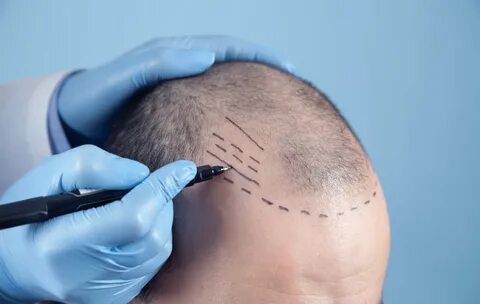Thinning in the crown region is one of the most common concerns faced by men experiencing hair loss. The crown, also referred to as the vertex, is the circular area at the back of the head where hair tends to thin with age or due to genetic factors. For many, this specific type of hair loss can be particularly noticeable and difficult to hide, as hairstyles often cannot fully mask the area. With advancements in medical technology, many individuals wonder if hair transplant surgery can effectively restore hair density in this region. If you are considering options such as Hair Transplant in Dubai, understanding how this procedure addresses thinning crown areas is essential.
Understanding Crown Hair Loss
Crown thinning is different from a receding hairline because it usually progresses in a circular pattern and may expand over time. The crown is an area with unique hair growth angles, making restoration slightly more challenging than other parts of the scalp.
Causes of Thinning Crown Areas
The most common reasons include:
| Cause | Description |
|---|---|
| Genetic Predisposition | Male pattern baldness often begins with thinning in the crown or hairline. |
| Aging | Natural reduction of hair follicles’ ability to regenerate with age. |
| Hormonal Imbalances | Dihydrotestosterone (DHT) affects hair follicles, leading to shrinkage. |
| Lifestyle & Stress Factors | Poor nutrition, chronic stress, or smoking can accelerate thinning. |
| Medical Conditions | Thyroid disorders, autoimmune diseases, or scalp infections may contribute. |
Can Hair Transplant Surgery Help?
Yes, hair transplant surgery can be an effective treatment for thinning crown areas. Surgeons carefully harvest healthy follicles from the donor region—typically the back or sides of the scalp—and implant them into the thinning crown. Over time, these follicles grow naturally, blending with the surrounding hair. The unique challenge of crown restoration lies in recreating the natural swirl or spiral pattern of the hair. Precision in placement ensures the results appear realistic.
Factors Influencing Success in Crown Transplants
While hair transplants can effectively treat thinning crowns, several factors determine the success and density achieved:
| Factor | Impact on Crown Restoration |
|---|---|
| Donor Hair Availability | Adequate donor supply is essential for natural coverage. |
| Degree of Thinning | Advanced crown baldness may require more grafts for noticeable results. |
| Hair Characteristics | Thickness, curl, and color contrast affect the visual density of transplanted hair. |
| Age of Patient | Surgeons often evaluate whether hair loss is still progressing before surgery. |
| Scalp Health | A healthy scalp ensures better graft survival and healing. |
Why Crown Hair Loss Is Challenging
Crown hair loss presents unique considerations compared to other scalp regions:
- Circular Pattern: The spiral arrangement requires precise follicle placement for natural results.
- Larger Surface Area: Crowns often need more grafts than frontal regions to achieve coverage.
- Lighting Exposure: Because the crown is at the highest point, it reflects light, making thinning more visible.
- Slower Results: Growth in the crown may appear slower, as the density takes time to build.
Non-Surgical Alternatives for Thinning Crown
While surgery is a reliable solution, some individuals may explore non-surgical treatments before committing. These include:
| Non-Surgical Option | Benefits |
|---|---|
| Medicated Topicals | May slow progression and maintain existing hair. |
| Oral Medication | Helps reduce DHT effects and delay further thinning. |
| PRP Therapy | Uses platelet-rich plasma to stimulate follicle activity. |
| Lifestyle Adjustments | Nutrition, stress management, and scalp care can improve overall hair health. |
FAQ’s
Is hair transplant surgery effective for restoring the crown?
Yes, it can effectively restore thinning crown areas when performed with precision, ensuring natural density and swirl patterns.
Will the results look natural?
Absolutely. When performed by experienced surgeons, transplanted follicles follow the crown’s natural spiral, blending seamlessly with existing hair.
How many grafts are usually needed for crown restoration?
The number varies depending on the degree of thinning. Since the crown covers a larger area, it may require more grafts than the hairline.
Is crown restoration suitable for everyone?
Not always. Adequate donor hair and stable hair loss patterns are necessary for a successful outcome.
Does crown hair grow slower after a transplant?
Growth occurs at the same rate as other transplanted areas, but because density builds gradually, it may appear slower in the crown region.
Can a hair transplant stop future thinning?
No, transplants restore existing thinning areas, but non-transplanted hair may continue to thin. Maintenance therapies may be recommended.
Conclusion
Thinning crown areas can be particularly challenging and often affect confidence. Hair transplant surgery offers a reliable solution by restoring natural density and recreating the unique swirl pattern of the crown. Factors such as donor hair availability, age, and the progression of hair loss play an important role in determining success. With modern advancements, achieving a natural, long-lasting result is highly possible. For those seeking a trusted solution in the region, Dynamic Life Clinics provides advanced hair restoration treatments tailored to individual needs.






